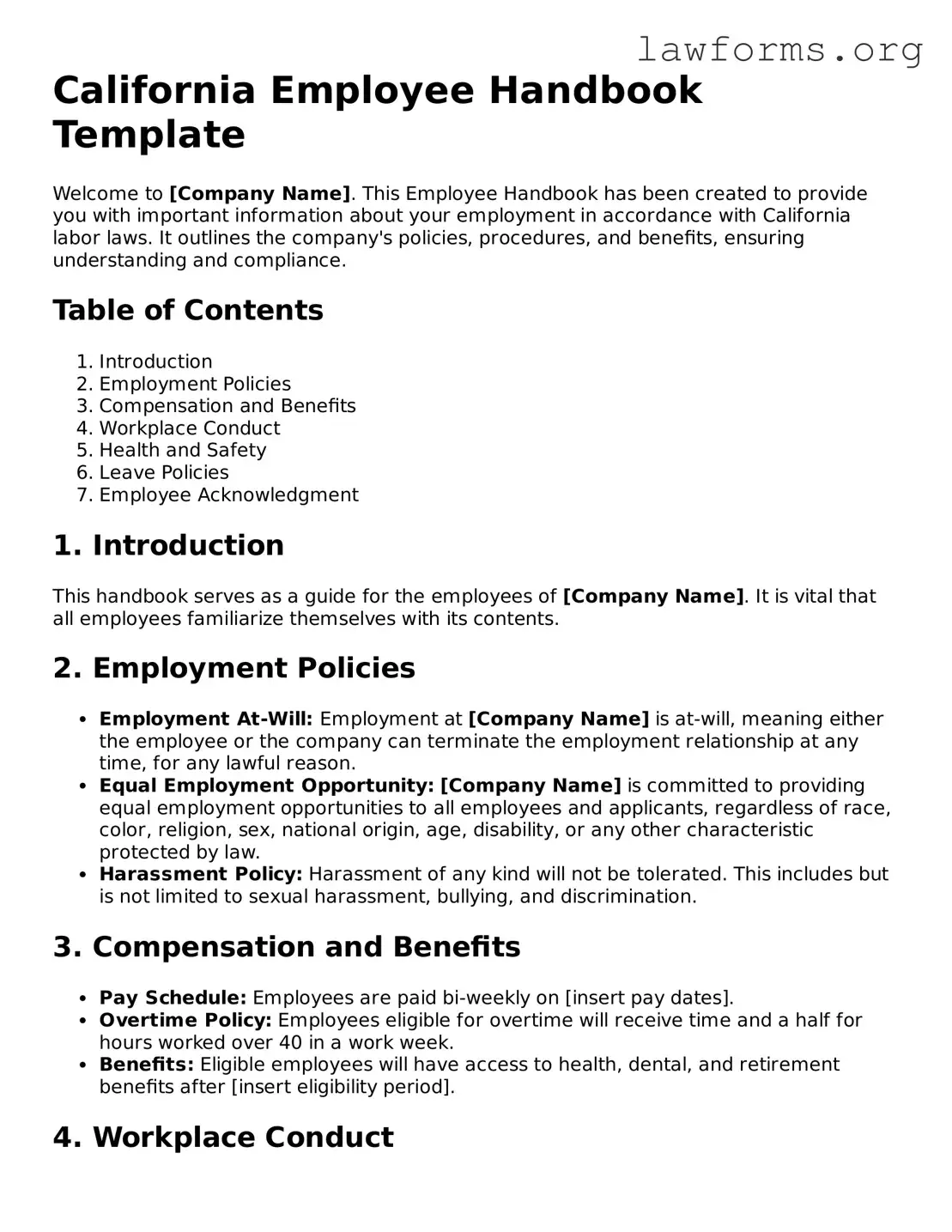California Employee Handbook Template
Welcome to [Company Name]. This Employee Handbook has been created to provide you with important information about your employment in accordance with California labor laws. It outlines the company's policies, procedures, and benefits, ensuring understanding and compliance.
Table of Contents
- Introduction
- Employment Policies
- Compensation and Benefits
- Workplace Conduct
- Health and Safety
- Leave Policies
- Employee Acknowledgment
1. Introduction
This handbook serves as a guide for the employees of [Company Name]. It is vital that all employees familiarize themselves with its contents.
2. Employment Policies
- Employment At-Will: Employment at [Company Name] is at-will, meaning either the employee or the company can terminate the employment relationship at any time, for any lawful reason.
- Equal Employment Opportunity: [Company Name] is committed to providing equal employment opportunities to all employees and applicants, regardless of race, color, religion, sex, national origin, age, disability, or any other characteristic protected by law.
- Harassment Policy: Harassment of any kind will not be tolerated. This includes but is not limited to sexual harassment, bullying, and discrimination.
3. Compensation and Benefits
- Pay Schedule: Employees are paid bi-weekly on [insert pay dates].
- Overtime Policy: Employees eligible for overtime will receive time and a half for hours worked over 40 in a work week.
- Benefits: Eligible employees will have access to health, dental, and retirement benefits after [insert eligibility period].
4. Workplace Conduct
- Code of Conduct: Employees are expected to conduct themselves professionally at all times.
- Dress Code: Appropriate attire should be worn while at work. Specific guidelines will be provided by your supervisor.
- Conflict Resolution: Employees are encouraged to address conflicts directly with the involved parties or seek mediation from management when necessary.
5. Health and Safety
[Company Name] prioritizes the health and safety of its employees. All employees must follow safety protocols and report any unsafe conditions to management immediately.
6. Leave Policies
- Family and Medical Leave: Eligible employees may take up to 12 weeks of unpaid leave for specific family and medical reasons, according to the Family and Medical Leave Act (FMLA) and California Family Rights Act (CFRA).
- Paid Sick Leave: Employees accrue one hour of paid sick leave for every 30 hours worked, up to a maximum of 24 hours in a year.
- Vacation Policy: Employees accrue vacation at [insert accrual rate], which can be used in accordance with company policy.
7. Employee Acknowledgment
By signing below, you acknowledge that you have received and read the [Company Name] Employee Handbook and understand its contents.
Employee Name: __________________________
Employee Signature: ______________________
Date: ___________________________________
